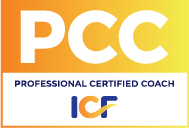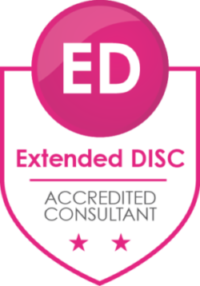What is NLP?
A variety of definitions and explanations exist what in the literature about what is NLP. For example, in the Introduction of their book, O’Connor & Seymour (1993, p. xii) state,
“NLP is the art and science of excellence, derived from studying how top people in different fields obtain their outstanding results. These communications can be learned by anyone to improve their effectiveness both personally and professionally”.
What Does it Do?
According to Howard (2005, p. 1.8), ‘NLP is a set of specific techniques that deliberately restructure toward positive functioning the brain’s thinking and the body’s behaviours by aligning the conscious with the unconscious mind and body’ and McWhirter, (1992) states it is ‘the study of the structure of subjective experience’. Heap (1989, p.118-119) gives the following description of NLP – ‘.. is a model of human behaviour and cognition that describes how people represent their world, how they communicate with it and one another, how it can be that they experience distress and disappointment in these interactions, and how they can be helped to change their representation of the world to alleviate their distress and cope with life more effective and with greater fulfillment’.
NLP denotes the view that a person is a whole mind-body system with patterned connections between internal experience (neuro), language (linguistic) and behaviour (programming), (Tosey & Mathison, 2003). The three components are:
- Neuro (internal experiences) –
- The nervous system’s taking in of reality through the five senses:
- Visual (sight);
- Auditory (sound);
- Kinaesthetic (touch);
- Olfactory (smell);
- Gustatory (taste).
- The nervous system’s taking in of reality through the five senses:
- Understanding how the body’s and mind’s neurology (internal experiences) works to better direct it toward more effect thoughts and behaviours; and
- Creating new neurological pathways that break through the mental boundary conditions.
- Linguistic (language) –
- Becoming aware of how communication occurs with the self and others:
- Pictures;
- Sounds;
- Feelings;
- Tastes;
- Smells; and
- Internal dialogue.
- Becoming aware of how communication occurs with the self and others:
- Using the language to guide the mind toward change; and
- Speaking to others within their particular representational system or their model of the world.
- Programming (behaviour) –
- Understanding the mind is like a computer with thought patterns as the ‘software’, discovering what programs are determining the current experience; and
- Using specific tools and techniques to reprogram, upgrade and install new ‘software’ for optimal high performance.
(Howard, 2005).
NLP may be best summed up in the sentence ‘the map is not the territory’ (Howard, 2005). This means that every one of us operates on the basis of our internal representation (our map) and not the world itself (the territory). The maps that we create may be limited in many ways as well as being distorted and inflexible and therefore the choices that we make available for ourselves are restricted and often transpire as frustrating (Howard, 2005). It is therefore the coach’s role to understand and operate the client’s map of the world in order to help the client overcome their challenges and provide them with more choices (Howard, 2005).
What is the background of NLP?
According to McLendon (1989), neuro-linguistic programming (NLP) emerged between 1972 and 1981 and was developed at the University of California by Richard Bandler, who was a student of computer science and mathematics and John Grinder, a professor of linguistics (Tosey & Matheson, 2003). During this time, Grinder and Bandler studied therapists that were producing excellent results with their clients and transforming their clients’ ways of thinking, feeling and behaving (Howard, 2005).
The therapists were Virginia Satir, Family therapist; Fritz Perls, Gestalt therapist; and a psychiatrist named Milton Erikson who legitimised hypnotherapy as a healing treatment modality accepted by the American Medical Association (Howard, 2005). According to Howard (2005), originally Bandler and Grinder aimed to discover exactly what was happening in the minds and bodies of the patients when change occurred and later on examined what was happening in the minds and behaviours of the therapists who were achieving great results with their clients.
From these observations, Bandler and Grinder developed a set of ideas and practices which has evolved into the systemic study of human communication and has a variety of methods and tools that have been generated by modelling exceptional people (O’Connor, 2001).
Over the years, NLP has achieved popularity in a variety of professions from teaching to coaching, counselling and sales people and is predominantly used as a method of communication and personal development (Tosey & Matheson, 2003).
If you are ready to reclaim your courage and take the next step towards your freedom and opening your heart, why not join our Toolkit?
References:
Heap, M. 1989, ‘Neurolinguistic programming: What is the evidence?’ In D. Waxman, D. Pedersen, I. Wilkie & P. Mellett (Eds.) Hypnosis: The Fourth European Congress at Oxford. London: Whurr Publishers, pp 268-280.
Howard, C. 2005, Master Results Certification, California, USA: Academy of Wealth and Achievement.
McLendon, T. L. 1989, The Wild Days: NLP 1972 – 1981, Cupertino, California: Meta Publications.
McWhirter, J. 1992, Sensory Systems Training Manual, Sensory Systems, Glasgow, UK.
Miller, G.A., Galanter, E.,& Pribram, K.H. 1960, Plans and the Structure of Behavior New York, Holt, Rinehart and Winston, Inc.
O’Connor, J. 2001, NLP Workbook, Hammersmith, London: Harper Collins Publishers.
O’Connor J. & Seymour J. 1993, ‘Introducing Neuro-Linguistic Programming: Psychological Skills for Understanding and Influencing People’, London: Aquarian/Thorsons.
Tosey, P. and Mathison, J. 2003, `Neuro-linguistic Programming and Learning Theory: a response’, The Curriculum Journal Vol. 14 no.3 pp. 361 – 378.

















Leave A Response